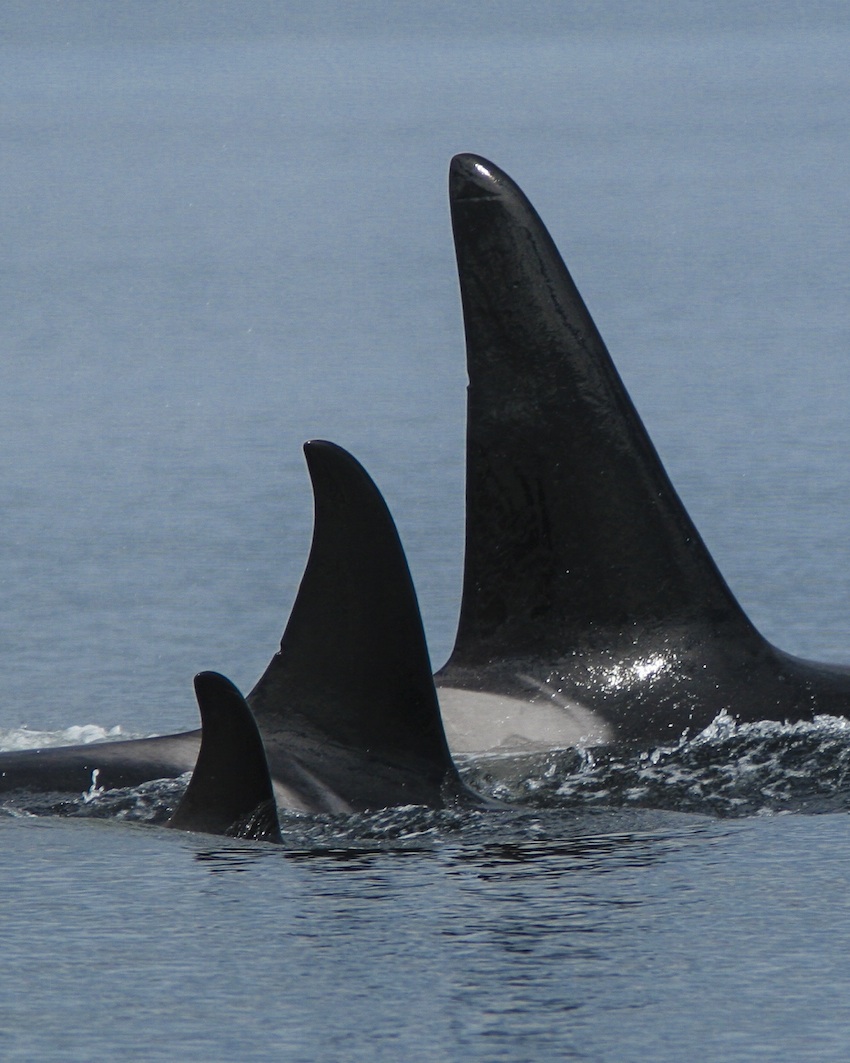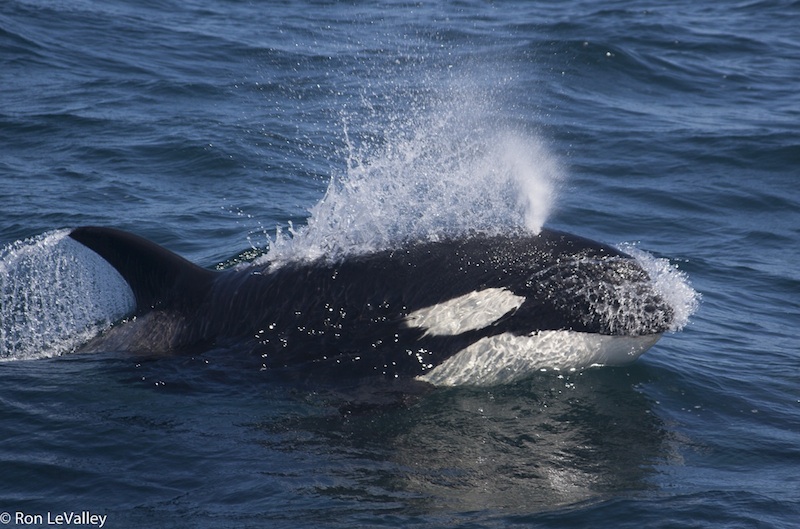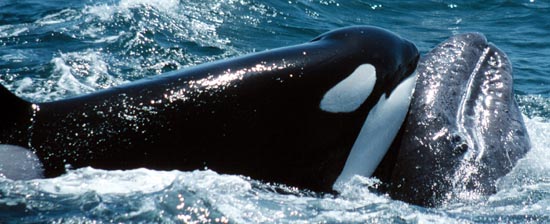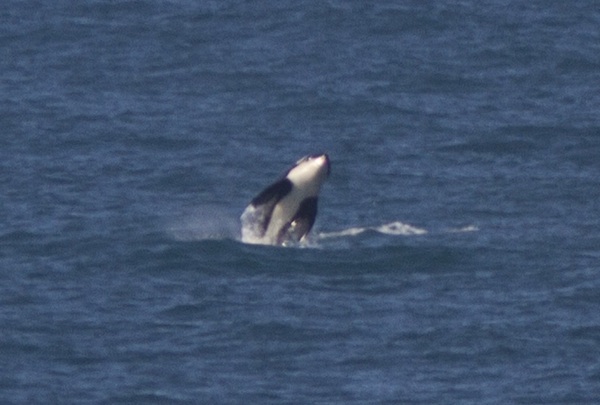Orca Facts
- Order: Cetacea
- Family: Delphinidae
- Genus: Orcinus
- Species: orca
- Status: Endangered in the Pacific
- Weight: 16-22,000 lbs
- Off our coast:


Orcas, also called killer whales, are the largest of the dolphins and one of the largest predators of the ocean. Their range spans the globe from pole to pole, and individual orcas belong to regional ecological groups, called ecotypes, that have distinct ranges and behaviors. Scientists recognize at least 10 ecotypes for the species worldwide, three of which can be found off California: Southern Resident, Transient, and Offshore.
We are seeing orcas off the Mendocino Coast more in recent years, and the sightings are very exciting! Orcas became known as killer whales when Spanish sailors, who witness their attacks on larger whales, began calling them “whale killers”. Over time, the name was gradually translated to “killer whale.”
Size and identification
Orcas are mostly black above with a white pattern on the undersides. They also have a big white spot just behind the eye. Just behind the dorsal fin is a gray “saddle” that varies in shape. Orcas are sexually dimorphic, meaning that males and females are shaped differently. Adult males are larger with a tall dorsal fin that is unique to this species. Adult males can be over 30 feet in length while adult females can be up to 28 feet. Female and young male dorsal fins are shorter and more curved than the adult males. Each Orca has an distinctly shaped and scarred dorsal fin, that, along with the saddle and shape of the eye patch, helps to identify individuals. If you have the opportunity to see Orcas close-up, take some photos — these can be useful to our knowledge of the populations! And if you’re on the water, always be whale wise!

Many scientists now recognize four populations of Orcas that live off the Pacific Coast and three of these can be seen off the Mendocino Coast. The best known Orcas are the Northern and Southern Resident Orcas of the Inland Passage in Washington and British Columbia. A population of Orcas called Bigg’s Whales (previously known as Transients) are found from Southern California to as far north as Alaska. The fourth group is less well known, and is found primarily well away from the coast. These are called the Offshore Orcas.

Feeding
The four different populations of Orcas have different feeding habits. The Resident Orcas feed almost exclusively on salmon while Bigg’s Whales feed primarily on other marine mammals including seals, sea lions, sea otters, dolphins and even large whales. They have also been known to eat Great White Sharks! The Offshore Orcas are less well known but appear to feed primarily on sharks, squid and other pelagic fish.
Migration

Orcas are not considered to be predictable migrants like the larger baleen whales. They do travel extensively, and in some cases their occurrence can be somewhat predictable. For example, when the Gray Whale mothers and calves are migrating through the Monterey Bay area, Orcas are regularly seen. Recently, satellite tracking devices have documented movements of the Resident Orcas from British Columbia swimming almost non-stop to Central California and then returning. In 2013 the “K-pod” group did this twice in a matter of couple of weeks, passing by the Mendocino coast 4 times!
Singing
Orcas do not sing like the Humpbacks, but they do make a large variety of sounds, primarily clicks and whistles in various patterns. The sounds have at least two functions: communication and echolocation. We don’t really understand their language, but we do believe that their communication is quite sophisticated.
Breeding
Females give birth for the first time when they reach a length of about 14 feet in length. Gestation is about 15 months and females can give birth any time of the year. Calves nurse for up to two years and most females give birth at intervals of about 5 years. It is thought that food availability determines the frequency of birth as captive Orcas are known to give birth in 2-year intervals. Orcas give birth until they are about 40 years old, then they become “matriarchs” of their group. The Resident Orcas are led by their mother; all of the members of the group are children of the oldest female. Female Orcas can live for 70-90 years while males usually only live about 30 years.

Population Status
The status of the Offshore orcas and Bigg’s Whales is not well known, but the Resident Orcas are in rough shape. The Northern Resident population that lives in British Columbia and Alaska has about 200 individuals and is listed as Threatened. The Southern Residents, primarily living in the waters around Southern Vancouver Island, include less than 100 individuals and are considered Endangered. Many researchers believe that these declines are related to a decline in salmon populations, but other factors such as noise pollution and toxic pollutants are likely contributors. Orcas found dead on the shore have extremely high levels of PCBs and flame retardants, probably due to their place at the top of the food chain.
